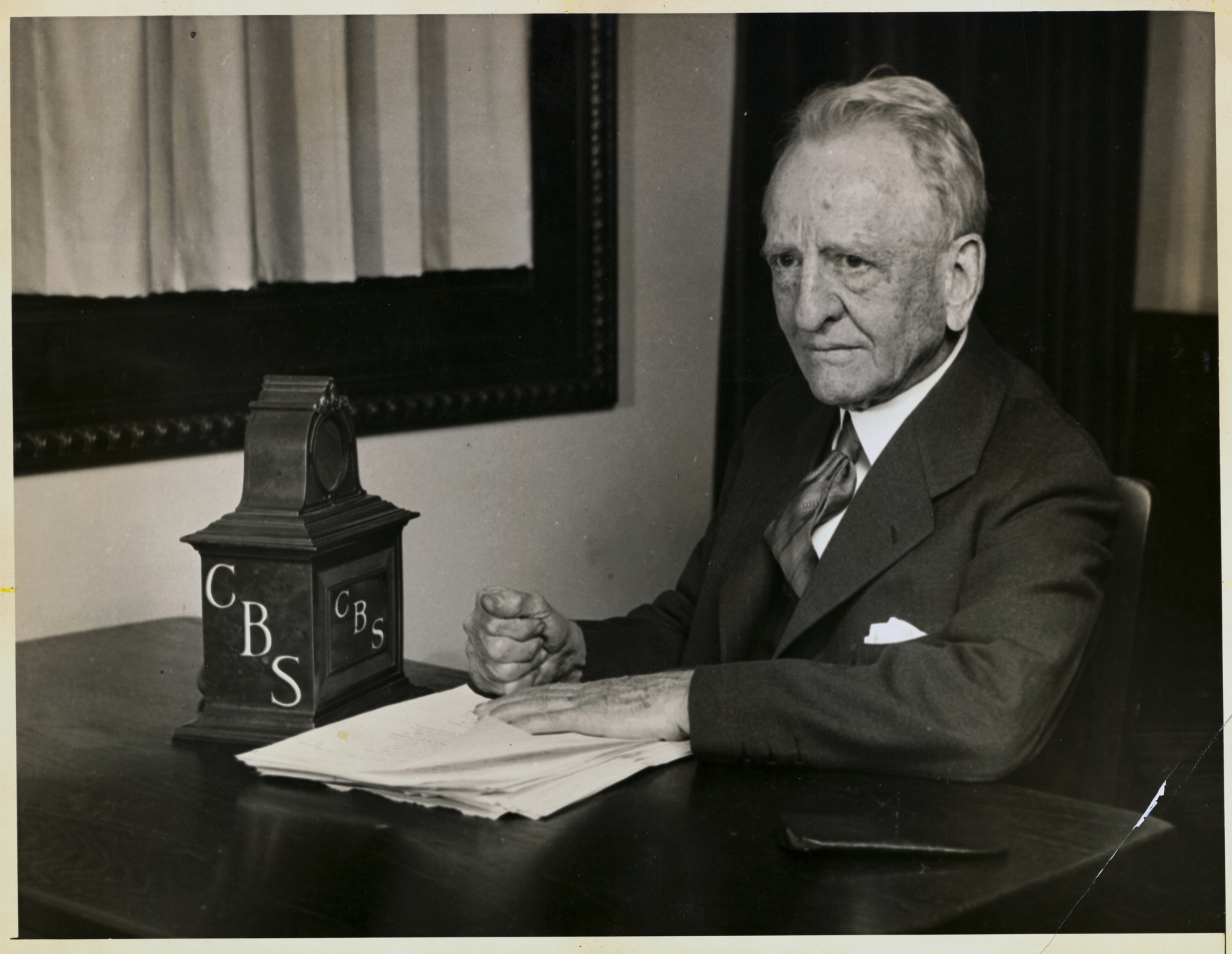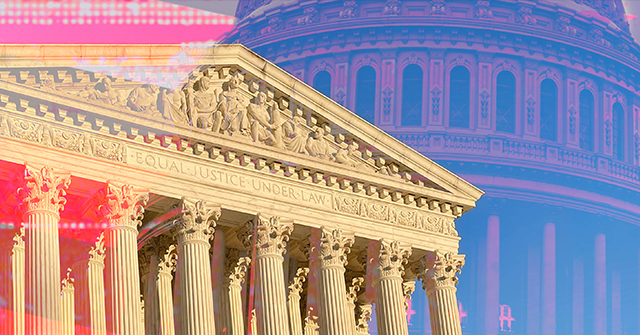The Clause That Vanished—and the Senators Who Found It
When President Donald Trump moved to fire Federal Reserve Governor Lisa D. Cook this week, he touched off an immediate debate about what the law means when it says a Fed governor can be removed only “for cause.”
But what if the rule that the president can remove a Federal Reserve official only “for cause” simply disappeared?
That’s exactly what happened in 1933. In the legislative blitz to stabilize a collapsing banking system, Congress quietly dropped the “for cause” language that had anchored the 1913 Federal Reserve Act. For nearly two years, on paper, the Washington board’s appointive members served at the President’s pleasure. Even stranger: hardly anyone noticed.
The discovery came in 1935, during hearings on the next big banking bill, when senators realized the old safeguard had gone missing. The Senate hearings on the bill began on April 9, and for weeks they proceeded as if the “for cause” language remained in the bill. Over the in House, deliberation over the legislation similarly assumed the president could not remove Fed officials except for cause.
It was not until May 15 that Winthrop Aldrich—the chairman of Chase National Bank and son of Senator Nelson Wilmarth Aldrich, one of the key architects of the central banking plan that became the Fed—brought to the attention of the committee the fact that the current law no longer required cause. Senator Carter Glass of Virginia—another of the architects of the Fed—admitted he must have been “asleep” when it slipped through.
Aldrich said this highlighted the danger of “hasty legislation.” Glass, however, saw something more nefarious at work.
“I do not know that it was due to hasty action. It might have been due to covert action. I never heard of it until the other day,” Glass said.
1935: A Hostile Court, a Blamed Fed, and a Wary Democratic Congress
The timing of the debates over the bill was everything. Democrats held lopsided majorities in both chambers—69 of 96 Senate seats, 322 of 435 House seats. Franklin Roosevelt remained popular despite the ongoing Depression. And many lawmakers, across party lines, blamed the Fed’s early-Depression policy mistakes for deepening the economic catastrophe.
Meanwhile, the Supreme Court was systematically dismantling Roosevelt’s agenda. Schechter Poultry had struck down industrial codes. Railroad Retirement Board v. Alton had invalidated pension plans. Louisville Joint Stock Land Bank v. Radford had gutted farm relief. More defeats loomed on the horizon.
President Franklin Roosevelt signs the Emergency Banking Act on March 9, 1933, in the White House. (Bettmann/Getty Images)
In this climate, the last thing Hill Democrats wanted was to hand a bench of unelected conservative justices yet another tool to second-guess whether an elected president had “sufficient” cause to remove Fed officials. They had watched the Court block Roosevelt at every turn. Why create another opening for judicial interference?
That backdrop makes Congress’s ultimate choice all the more revealing.
How Humphrey’s Executor Changed Everything
The Supreme Court’s decision in Humphrey’s Executor v. United States landed like a thunderbolt in May 1935, right in the middle of banking reform deliberations. The case involved Roosevelt’s attempt to fire a Federal Trade Commissioner. The FTC statute contained precise language: officials could be removed for “inefficiency, neglect of duty, or malfeasance in office, but for no other cause.”
The Court upheld that restrictive formula and struck down Roosevelt’s dismissal. Here was a ready-made template—tested, approved, and freshly minted by the Supreme Court itself. Congress could have simply copied the FTC’s enumerated grounds into the Federal Reserve Act. The legal path was clear, and the precedent was brand new.
Instead, lawmakers chose a completely different route.
When senators put pen to paper, they restored removal protection, but kept it deliberately sparse: Fed governors could be “removed for cause by the President.” That was it. No itemized list of acceptable reasons. No requirement to file formal charges. No “notice and hearing” procedures. No judicial review mechanism.
The contrast with Humphrey’s Executor could not have been starker. Congress had seen exactly what a court-friendly removal standard looked like—and consciously rejected it.
In the same legislative package, lawmakers renamed the Federal Reserve Board as the Board of Governors, lengthened terms to 14 years, and placed monetary policy on a more institutional footing through the Federal Open Market Committee. The design message was unmistakable: insulate the Fed from day-to-day presidential meddling without turning judges into human resources managers for central banking.
What “For Cause” Meant in the Room Where It Happened
Senator Glass was explicit about the balance Congress was striking. The Fed, he insisted, was never meant to be hermetically sealed from politics. If the Board pursued a course “manifestly damaging to the public interests,” a newly elected President could, “for cause stated in writing,” dismiss members and “change its policy.”

United States Senator Carter Glass of Virginia sitting at his desk, circa 1935. (Bettmann/Getty Images)
That standard required more than presidential whim—there had to be a stated reason. But it was not designed as a trial, either. When a New Jersey banker asked whether a President had to “prefer charges” (the legal term for filing formal accusations), Glass said no. The President had to give his reasons in writing to the Senate, but he did not have to launch a charging-and-hearing process.
Lawmakers had been shown that legalistic model in Humphrey’s Executor and other statutes. They declined to adopt it. They opted for a political check—accountability to the Senate and the public—rather than a judicial one.
In other words, Congress did not rely on courts to guarantee Fed independence. It relied on institutional architecture and its own power. Fourteen-year staggered terms prevent capture by any single president. Replacements require Senate confirmation. The 12-member Federal Open Market Committee blends Washington-based governors with regional Reserve Bank presidents, so one vacancy cannot flip monetary policy overnight.
But putting the removal of Fed officials out of reach of the courts hardly makes the “for cause” provision toothless. If a president were to wage war against the Fed by removing officials for flimsy causes, the Senate would have the power to thwart an unwelcome takeover of the central bank by refusing to confirm his nominees. In theory, the Senate could demand that the president restore removed board members rather than accept new nominees. The system of checks-and-balances, in other words, ran through the Senate rather than the judicial branch.
In the historical context, that makes a lot of sense. The dominant Democrats were understandably resentful that unelected poobahs on the Supreme Court were thwarting the democratic will of the American people by striking down New Deal legislation. They were suspicious of the unelected Fed board that they saw as having exacerbated—or perhaps even caused—the economic calamity afflicting the nation. It would have seemed ridiculous to them to set the Supreme Court up as the guardians of the Federal Reserve governors’ job security.
Even If You Ignore the History: The Text Points the Same Way
You don’t need legislative archaeology to reach this conclusion. Just read the words, as the textualists on the Supreme Court are likely to do. Right as Humphrey’s Executor blessed the FTC’s enumerated formula, Congress chose the Fed’s bare-bones “for cause” standard instead. If lawmakers had wanted court-supervised procedures—”notice,” “hearing,” “record,” “judicial review”—they knew the vocabulary and deliberately left it out.
The president is not an administrative agency subject to the Administrative Procedure Act. There is no built-in procedural scaffold to plug into. The undefined “for cause” standard is open-textured by design, supplying a duty of reason-giving rather than a blueprint for judicial trials. From a textualist perspective, there are no statutory grounds for the judiciary to create a procedure and police what counts as cause. The question of whether the president has met the burden of removing an official for “cause” is what the Supreme Court refers to as “nonjusticiable,” meaning not a matter for the courts to decide.
Even if you’re unmoved by originalism or textualism, a commonsense, functional reading points the same way. “For cause” is an open-ended standard meant to preserve the state’s capacity to govern: the president must state a reason tethered to the office’s purposes—financial integrity, competence, public trust—but courts shouldn’t turn that into a criminal-style proceeding or a running audit of motives. The real safeguards are structural and political, not judicial. If abuse occurs, the sensible correction is ex post and modest (declaratory relief or back pay), not an injunction that puts the court in charge of who is serving on the Fed.
Why This History Matters in the Cook Fight
Viewed through the 1935 lens, today’s dispute comes into sharp focus. The Fed really is different from other agencies: the President must state cause, and at-will firing is off the table. But “for cause” here means the flexible standard Congress adopted in 1935, not the FTC’s restrictive checklist that Humphrey’s Executor had just upheld.
In 1935, a Democratic Congress facing a hostile Supreme Court and a discredited Federal Reserve wrote a removal rule that constrained naked political firings without inviting judges to micromanage presidential personnel decisions. Lawmakers restored “for cause,” required written reasons, and relied on structural safeguards to protect monetary independence.
That is the standard on the books today. Measured against the history, the text, and the institutional logic, the legal ground in the Lisa Cook dispute tilts toward presidential discretion, not judicial oversight of central bank staffing.
Read the full article here
